The first contingent of Civilian Conservation Corps enrollees arrived at Grand Canyon National Park on May 29, 1933 and for the full lifespan of the CCC, Grand Canyon was home to CCC workers until the program was disbanded in 1942. Civilian Conservation Corps companies 818, 819, 847 and 2833 worked at Grand Canyon in addition to rotating to Phoenix and Tucson to perform work there during the winter months.
Grand Canyon National Park existed prior to the creation of the CCC, however with the abundant manpower made available through the CCC, Grand Canyon gained many infrastructure improvements that it might not otherwise have received. Inevitably, at a park so vast, the casual observer overlooks most of the CCC built improvements, while other improvements require a strenuous hike in order to be viewed and enjoyed. Thankfully, the National Park Service has created a short walking tour that highlights a number of CCC built projects in the area of Grand Canyon Village on the South Rim. What follows is taken largely from the text of the walking tour, with additional information added for clarification or for human interest. The color photos were all taken in November 2007.

If you proceed along Village Loop a few hundred feet and keep looking to the left, you will see a wooden bridge that leads across a drainage system toward the railroad tracks. The CCC built two wooden bridges across the wash in this area, according to the Park Service walking tour literature. The bridge that remains was completed in 1937. Close inspection will reveal that steel I-beams have been put in place under each side of the bridge; indeed, the timbers were replaced recently when the bridge became unsafe in the 1980s. The current bridge is a careful reproduction, built with the aid of historic photographs.
 From the intersection of Village Loop and Navajo Street, the route of the walking tour proceeds across the railroad tracks, past the train station and up the steps leading to the historic El Tovar hotel. At this point the visitor is on the flat crest of ground immediately adjacent to the south rim of the canyon and if they proceed to the east along the rim to a point between Hopi House and Verkamps Curios they will see a bench carved out of a huge log. The CCC constructed log benches in conjunction with their work refurbishing the rock wall along the rim. It is believe that this massive bench was created in 1934 or 1935, though no documentation exists to provide proof. It seems ironic that, while the CCC boys seldom left visible markings to identify their work, countless Grand Canyon visitors have seen fit to carve their names into this historic log bench, seemingly in an effort to make their own short visit somehow more meaningful.
From the intersection of Village Loop and Navajo Street, the route of the walking tour proceeds across the railroad tracks, past the train station and up the steps leading to the historic El Tovar hotel. At this point the visitor is on the flat crest of ground immediately adjacent to the south rim of the canyon and if they proceed to the east along the rim to a point between Hopi House and Verkamps Curios they will see a bench carved out of a huge log. The CCC constructed log benches in conjunction with their work refurbishing the rock wall along the rim. It is believe that this massive bench was created in 1934 or 1935, though no documentation exists to provide proof. It seems ironic that, while the CCC boys seldom left visible markings to identify their work, countless Grand Canyon visitors have seen fit to carve their names into this historic log bench, seemingly in an effort to make their own short visit somehow more meaningful. Proceed from the log bench in a westerly direction (to your left as you face the canyon) less than 100 feet to the rock wall opposite Hopi House. The walking tour notes indicate that in 1934 and 1935 the CCC completely rebuilt the rock wall along the South Rim from Verkamps Curios to Lookout Studio, replacing a poorly constructed and dilapidated dry wall and a section of wooden fence. The CCC standardized the dimension to 27 inches high and 18 inches wide, with guardrails added in some places. It is worth pointing out that in some places the workers would have been in quite a precarious position as they worked on the wall, but to their credit, no major accidents or injuries were reported as a result of CCC work at Grand Canyon’s South Rim. (Indeed, the only CCC fatalities reported at Grand Canyon were the result of off-duty mishaps that involved a fall from the south rim and a drowning in the Colorado River at the bottom of the canyon.)
Proceed from the log bench in a westerly direction (to your left as you face the canyon) less than 100 feet to the rock wall opposite Hopi House. The walking tour notes indicate that in 1934 and 1935 the CCC completely rebuilt the rock wall along the South Rim from Verkamps Curios to Lookout Studio, replacing a poorly constructed and dilapidated dry wall and a section of wooden fence. The CCC standardized the dimension to 27 inches high and 18 inches wide, with guardrails added in some places. It is worth pointing out that in some places the workers would have been in quite a precarious position as they worked on the wall, but to their credit, no major accidents or injuries were reported as a result of CCC work at Grand Canyon’s South Rim. (Indeed, the only CCC fatalities reported at Grand Canyon were the result of off-duty mishaps that involved a fall from the south rim and a drowning in the Colorado River at the bottom of the canyon.) Proceeding along the rim to the west you’ll come to a flagpole at what is called North Rim View. From here you’ll see – barely – the North Rim’s Grand Canyon Lodge. Company 818 worked on the North Rim in the summers, building structures, fences, fighting forest fires and building roads. During the winter months the men were moved to the bottom of the canyon to areas like Phantom Ranch. Phantom Ranch’s Bright Angel Campground was built by the CCC, as were a number of trails including Ribbon Falls Trail and the nine-mile Clear Creek Trail. CCC enrollees also constructed the Colorado River Trail from 1933 to 1936 and while it is only two miles long, it is reportedly the most difficult and hazardous trail ever constructed in the canyon.
Proceeding along the rim to the west you’ll come to a flagpole at what is called North Rim View. From here you’ll see – barely – the North Rim’s Grand Canyon Lodge. Company 818 worked on the North Rim in the summers, building structures, fences, fighting forest fires and building roads. During the winter months the men were moved to the bottom of the canyon to areas like Phantom Ranch. Phantom Ranch’s Bright Angel Campground was built by the CCC, as were a number of trails including Ribbon Falls Trail and the nine-mile Clear Creek Trail. CCC enrollees also constructed the Colorado River Trail from 1933 to 1936 and while it is only two miles long, it is reportedly the most difficult and hazardous trail ever constructed in the canyon. Continue walking westerly to a point in front of Kachina Lodge and you will find a plaque that has been affixed to the top of the stone wall. This plaque commemorates the transcanyon telephone line installed by the CCC. Prior to construction of this transcanyon line, communication between the North and South Rims was unreliable. In order to remedy the situation in 1934, a group of CCC enrollees started from each side of the canyon, working their way towards each other, all the while stringing telephone line on metal poles, down steep cliffs and though narrow gullies, often in temperatures exceeding 100 degrees! When the transcanyon telephone line was completed in 1935 it stretched from the North Rim along North Kaibab Trail to Cottonwood Camp and Phantom Ranch, then across the Colorado River to a spur line on the south Kaibab Trail at a point known as “The Tipoff.” The main line continued along Bright Angel Trail connecting Phantom Ranch to Indian Garden, and then to the South Rim developed area via the rest houses along the trail. The line was used so much that another circuit was added in 1938-1939. The Park Service guide reports that the line included 592 metal poles and, because cell phones do not work with in the canyon, parts of the original telephone line are still in use today. If you look carefully down the slope beyond the plaque on the stone wall, you will see two or more of the metal poles for the telephone line.
Continue walking westerly to a point in front of Kachina Lodge and you will find a plaque that has been affixed to the top of the stone wall. This plaque commemorates the transcanyon telephone line installed by the CCC. Prior to construction of this transcanyon line, communication between the North and South Rims was unreliable. In order to remedy the situation in 1934, a group of CCC enrollees started from each side of the canyon, working their way towards each other, all the while stringing telephone line on metal poles, down steep cliffs and though narrow gullies, often in temperatures exceeding 100 degrees! When the transcanyon telephone line was completed in 1935 it stretched from the North Rim along North Kaibab Trail to Cottonwood Camp and Phantom Ranch, then across the Colorado River to a spur line on the south Kaibab Trail at a point known as “The Tipoff.” The main line continued along Bright Angel Trail connecting Phantom Ranch to Indian Garden, and then to the South Rim developed area via the rest houses along the trail. The line was used so much that another circuit was added in 1938-1939. The Park Service guide reports that the line included 592 metal poles and, because cell phones do not work with in the canyon, parts of the original telephone line are still in use today. If you look carefully down the slope beyond the plaque on the stone wall, you will see two or more of the metal poles for the telephone line. Continue walking west past the Thunderbird Lodge, Bright Angel Lodge and Lookout Studio to historic Kolb Studio. In 1936 the CCC built the stairs that lead up the slope toward the mule corral. The stairs were originally of all stone construction without handrails, however the stone treads have been replaced with concrete steps and for safety reasons, a hand rail in now in place. Proceed up these steps and walk to your right, a few hundred feet to the stone and pipe mule corral and the trailhead of Bright Angel Trail.
Continue walking west past the Thunderbird Lodge, Bright Angel Lodge and Lookout Studio to historic Kolb Studio. In 1936 the CCC built the stairs that lead up the slope toward the mule corral. The stairs were originally of all stone construction without handrails, however the stone treads have been replaced with concrete steps and for safety reasons, a hand rail in now in place. Proceed up these steps and walk to your right, a few hundred feet to the stone and pipe mule corral and the trailhead of Bright Angel Trail. The Park Service walking tour points out that the Bright Angel Trail was used by American Indians long before the first pioneers arrived in the 1880s. The trail was transferred to the National Park Service in 1928, some five years before the creation of the CCC. The CCC undertook major reconstruction of the trail, completing the work in 1939. Originally the trail was only two to three feet wide in places. Using pick, shovel, drill and dynamite, the boys of the CCC reconstructed and rerouted the trail to its current width of four to six feet. Additionally, the CCC built rustic stone and timber shelters long the trail.
The Park Service walking tour points out that the Bright Angel Trail was used by American Indians long before the first pioneers arrived in the 1880s. The trail was transferred to the National Park Service in 1928, some five years before the creation of the CCC. The CCC undertook major reconstruction of the trail, completing the work in 1939. Originally the trail was only two to three feet wide in places. Using pick, shovel, drill and dynamite, the boys of the CCC reconstructed and rerouted the trail to its current width of four to six feet. Additionally, the CCC built rustic stone and timber shelters long the trail. When we consider the remote, rugged beauty of Grand Canyon today, we should also think back to a time when the area was even more remote, some 75 years ago when roads weren’t paved and helicopters hadn’t been invented. The 1930s were a time when any injury in the canyon could mean death and work was undertaken with hand tools and sheer muscle power. Today it’s an easy walk along the rim trail, with a number of opportunities to buy food and drink, and ample places to stop and rest. For the boys of the CCC, their foremen and supervisors, it wasn’t that way. We have them to thank for the fact that we can view the vastness of Grand Canyon in safety and near luxury.
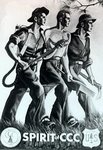
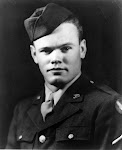





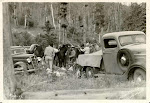
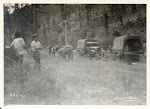


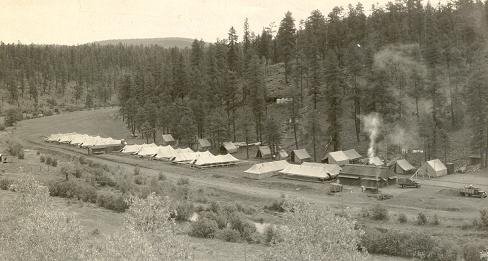


No comments:
Post a Comment